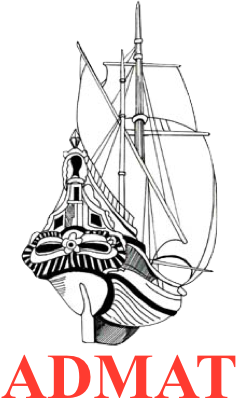Le Dragon Wreck 2019 Project
The Wreck Site Continued.
Over the next few days, a number of interesting finds were located in and off the grid. These were identified, photographed and measured into the grid. Half of the gudgeon were located by the Aquascan Dx200 gradiometer as they were deeper than the Aquascan Aquapulse metal detector could reach, and all were broken. It seems they were made by having the arms which are then shaped at one end like a curved palm of your hand to fix around a cylinder with the hole in the middle (for the pintle to slot in). On all of them, one of the arms had been knocked off, in the same way, indicating that the iron was “welded” together in a blacksmiths forge in three pieces and not cast iron. The fact that they all appear to have broken in the same way suggests a weakness in the design. In addition, there would have been electrolytic action with a chemical reaction between the copper sheeting, the seawater and the iron fastenings, which was unknown at this time period when the Le Dragon was repaired and the copper sheeting was added in 1782.
A number of broken pieces of copper sheeting with bronze nails were located. The copper is not a pure copper as it was concreted. In some cases, the copper sheeting looked to be 2mm thick but when it was examined it revealed that the copper sheeting was about 0.5mm thick with 1mm of concretion on both sides. The bronze or copper nails were made in two sections the square tail and the round head which was again affixed to the tail. The tail was hand crafted to a four-sided point.
More iron ballast bars were located each one fitted one of two sizes and each bar had two holes at either end so they could be lowered into position with a special tool. Wooden hand-cut trunnels were also located around the site.







































